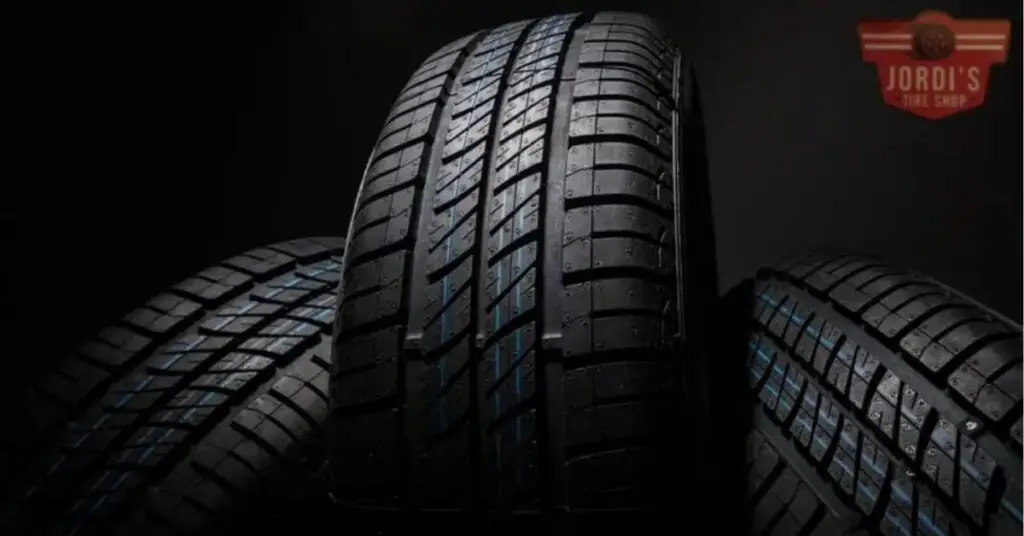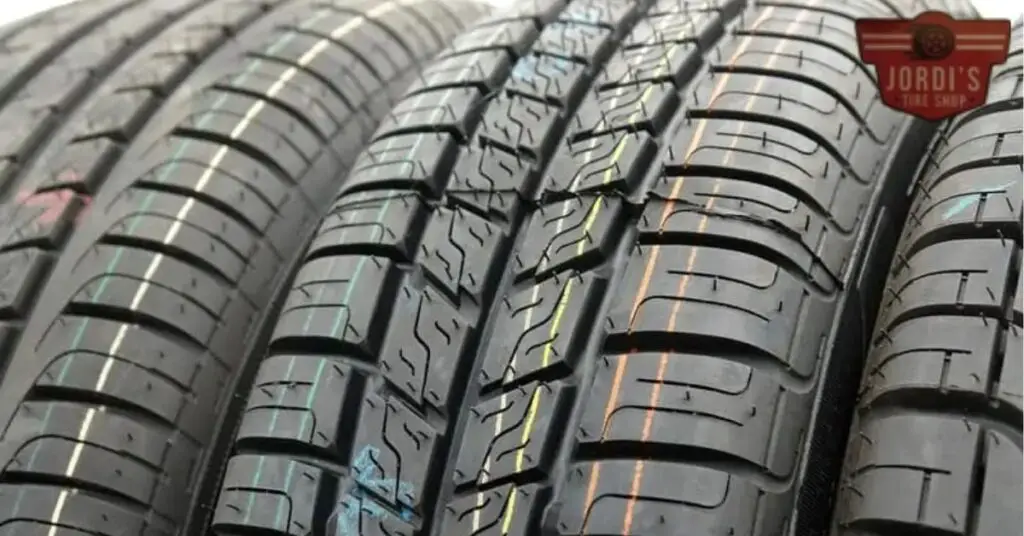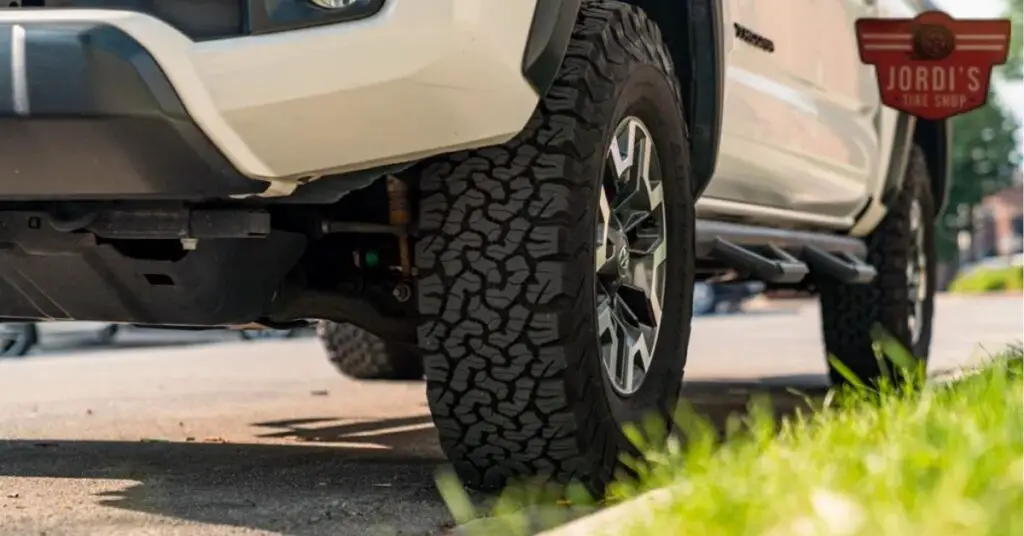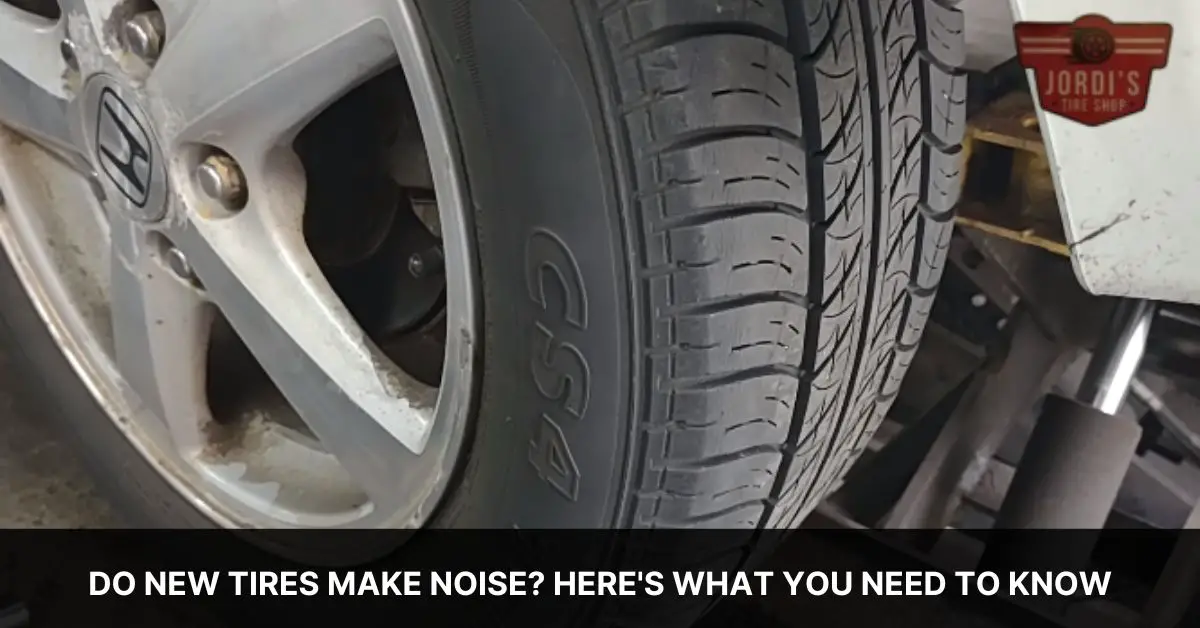Ever driven off the lot with a fresh set of tires, only to be greeted by an unexpected symphony of squeals and hums? It’s a common misconception that new tires are supposed to be whisper-quiet. In reality, they might sing a different tune, and that’s not necessarily a cause for alarm.
From hard tread wear to damaged rubber material, there are numerous reasons why your new tires might be making noise. But don’t fret, it’s often just a sign that your tires are adapting to the road. Understanding the underlying issue is the first step to resolving it.
So, buckle up as we delve into the world of tire noises, exploring why it happens and what you can do about it. It’s time to turn down the volume on your tires and enjoy a smoother, quieter ride.
Understanding the Science Behind New Tire Noise

Getting to the root of tire noise involves an understanding of a tire’s makeup and the impact of its tread patterns. Let’s unpack the science.
The Construction and Components of Tires
A crucial player in tire noise generation is the tire’s construction. Uniquely, different brands utilize varied synthetic materials to build their tires, leading to a diversified range of sounds. A prevalent material, hard rubber, often results in a humming sound while driving; a stark contrast to the quiet hum softer rubber materials emit. However, it’s not the brand or component alone that creates noisy new tires. The way your new tires have been worn down or any inflicted damage also significantly affects their noise output.
The Role of Tread Patterns in Noise Generation
Factoring into tire noise significantly are tread patterns. Different tread patterns produce a unique cacophony of sounds when the rubber meets the road. There are three main types of tread patterns – symmetrical, asymmetrical, and directional. Symmetrical tread patterns, associated with a larger contact point with the road, create the least noise. Asymmetrical patterns, having various designs featured on the tire’s surface, tend to generate notably louder sounds. And finally, directional tread patterns, well-regarded for having the highest grip, unfortunately, hold the title for the loudest tire on the road. Understanding these patterns and the fractions of noise they generate aids in making an informed tire purchase or identification of noise sources.
Note, however, that the primary cause of tire noise is not the tire itself but air being compressed and escaping from between the tread patterns as the tire rolls over the road. A tire with deeper or blockier tread patterns usually makes more noise due to this reason.
Exploring the Reasons Why New Tires Make Noise

Providing clarity on the intriguing subject of tire noises, let’s explore why new tires might be noisier than expected.
The Break-in Period of New Tires
Unique to brand new tires, the break-in period refers to the initial stage where tires adapt to your vehicle and driving pattern. The rubber of new tires is typically hard and aims to achieve maximum performance post a few miles of drive. But during this phase, tires tend to be noisier, making aggressive sounds on the road. It’s prudent to follow the care guide during this period to assure efficient tire performance.
The Impact of Tread Patterns on Noise
Tread patterns significantly influence the level of noise generated by tires. Brands introduce various tread types that affect both grip and noise level. Among them, the symmetrically designed treads are renowned for making the least noise due to a larger contact point with the road. Conversely, asymmetric treads that lay out different designs across the tire surface result in louder sounds. Each part contacts the road differently, which can lead to varied noise levels. Despite their audible nature, these asymmetrical tires offer the highest grip.
How Rubber Composition Influences Tire Noise
The type of rubber material used in the tire construction determines, to a considerable extent, the amount of noise they produce. A larger amount of rubber in contact with the road often equates to a noisier ride. In addition, the depth of the rubber tread comes into play. Noise commonly originates from air compressed between the tire rubber and the road, particularly in spaces between the tread. Consequently, tires with deeper, blockier treads tend to create more noise compared to those with shallower treads. Understanding the tire’s rubber composition and tread depth can therefore help reduce noise levels while driving.
The Chief Causes of Tire Noise and How to Resolve Them
Noise from tires can spring from various sources, each carrying a distinctive set of causes. We’ll delve into several key factors: worn-out tires, improperly inflated tires, and issues arising from worn wheel bearings.
Effects of Worn-Out Tires
Tire noises often originate from uneven or severe tire wear. For instance, a set of excessively worn tires, even those with uniform wear, might be the root cause of unusual tire noise. This is because the pattern of wear on the tire creates uneven contact between the road and the tire, resulting in vibrations that materialize as noise. Sticky, summer tires with a wear rating of 200, used for high-stress activities like autocross, may experience significant wear, becoming increasingly noisy before reaching their 10,000-mile lifespan. However, replacing these tires with new ones generally rectifies the issue.
Outcomes of Improperly Inflated Tires
Another culprit of unexpected tire noise can be improper tire inflation. Under-inflated or over-inflated tires do not have a uniform contact patch, which can lead to uneven tire wear and increased road noise. Insufficient tire inflation can also result in the tire producing a roaring noise at low speeds. Using a tire gauge to ensure your tires are inflated to the manufacturer’s recommended pressure serves as the prime solution for this situation.
Issues with Worn Wheel Bearings
Finally, another potential cause might lie in your vehicle’s wheel bearings, connecting your car’s wheels to the axle, designed to reduce friction and ensure a smooth ride. However, a failing wheel bearing can produce a distinct humming or grinding noise. This issue can prove challenging to diagnose, as these sounds may resonate and be perceived to come from different parts of the vehicle. If suspected, the safest course is to replace the wheel bearings entirely to ensure smooth, noise-free driving.
Remember, the cornerstone to reducing tire noise remains consistent preventive maintenance, which includes maintaining the proper tire inflation levels and following a regular rotation and alignment schedule. Mindful acceleration and deceleration can also help in minimizing uneven tire wear, hence reducing unnecessary noises in the long run.
Practical Tips for Reducing Excessive Tire Noise

Excessive tire noise can hamper your driving experience. Let’s examine practical ways to mitigate tire noise and enhance your ride.
Importance of Regular Tire Rotation
Regular tire rotation promotes even tread wear, which impacts tire noise. Forward and rear tires wear at a varying rate due to different functions. Forward tires tend to wear on the outside edge due to taking all the turns, while rear tires simply follow the front’s path and distribute the load evenly. Hence, the need for regular rotation of tires arises after every 6,000 miles to balance the overall usage. A well-balanced wear leads to a quieter journey.
Value of Correct Tire Inflation
Proper tire inflation affects noise levels. Overinflated or underinflated tires boost road noise levels. Overinflated tires offer less contact with road surface, generating a hard and bouncing ride that amplifies noise. Conversely, underinflated tires produce a wider contact patch, which sounds louder. Maintaining the correct tire pressure ensures less rolling resistance, promoting a quieter, smoother ride. Check your tire pressure monthly and tune it according to the manufacturer’s guidelines.
The Significance of Tire Balance
Balancing tires aids in avoiding vibration and unsettling noise. Unbalanced tires result from uneven weight distribution around the tire and wheel assembly, causing wobbling and hence loud noise. To rectify this, split the weight evenly by adjusting lead weights around the wheel. It’s recommended to check tire balance every 4 to 6 months, or 5,000 to 6,000 miles. If you detect unusual tire wear, wobbling or vibrations – these are signs of unbalanced tires that need immediate attention. Balancing ensures tires roll without disturbances, significantly reducing road noise.
The Benefits of Opting for Quieter Tires

Choosing quieter tires can turn a noisy drive into a pleasurable experience. This section delves into some factors you may consider when aiming for quieter tires.
Considerations for Tread Compound Choice
Tread compound choice plays a crucial role in how much road noise your tires generate. Softer compounds tend to generate less noise than their harder counterparts. However, it’s essential to note that reduced noise comes at the cost of quicker wear.
For instance, a softer compound tire might be ideal for someone who values a quiet ride and doesn’t mind frequent replacements. Conversely, if longevity and durability are your primary concerns, opting for harder compounds could be the best choice, despite the possibility of a bumpier, noisier ride.
Evaluating Tire Size and Noise Correlation
Tire size can also affect the amount of traffic noise produced. Larger diameter tires, especially winter or snow tires, tend to be the noisiest of all. The reason? They’ve got a larger contact area with the road, resulting in increased vibrations – and subsequently, more noise.
On the flip side, smaller tires usually have less rubber contacting the road. This generally results in a quieter drive, a desirable feature for most drivers. However, if you’re looking for a more robust, rugged tire—say for off-road or heavy-duty use—bigger might be better despite the potential bump in noise levels.
Remember, finding the right balance between tire compound, size, and your needs can ensure you end up with the best fit for both your vehicle and your driving habits. Opting for the right tire can be the secret to a quieter, smoother ride and an overall improved driving experience.
Conclusion
So, it’s clear that new tires can indeed make noise, and it’s usually nothing to worry about. Factors like the break-in period, tread patterns, and the type of rubber used all play a part in the sounds you hear. Remember, it’s all about finding that sweet spot between tire design, size, and your specific driving needs.
Don’t overlook the importance of regular tire maintenance. Proper tire inflation, regular rotation, and balance checks can go a long way in reducing noise and enhancing your driving experience.
Lastly, don’t be afraid to invest in quieter tires if noise is a significant concern for you. While they may wear out faster, the trade-off could be worth it for the peace and quiet. After all, a smoother, quieter ride is what we’re all after, right?
Related Posts:

